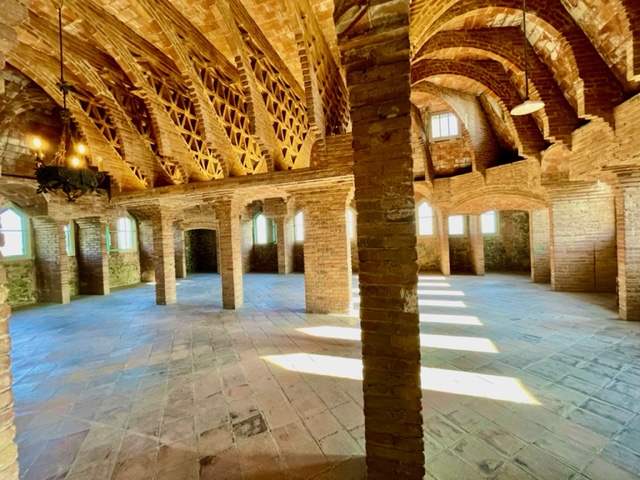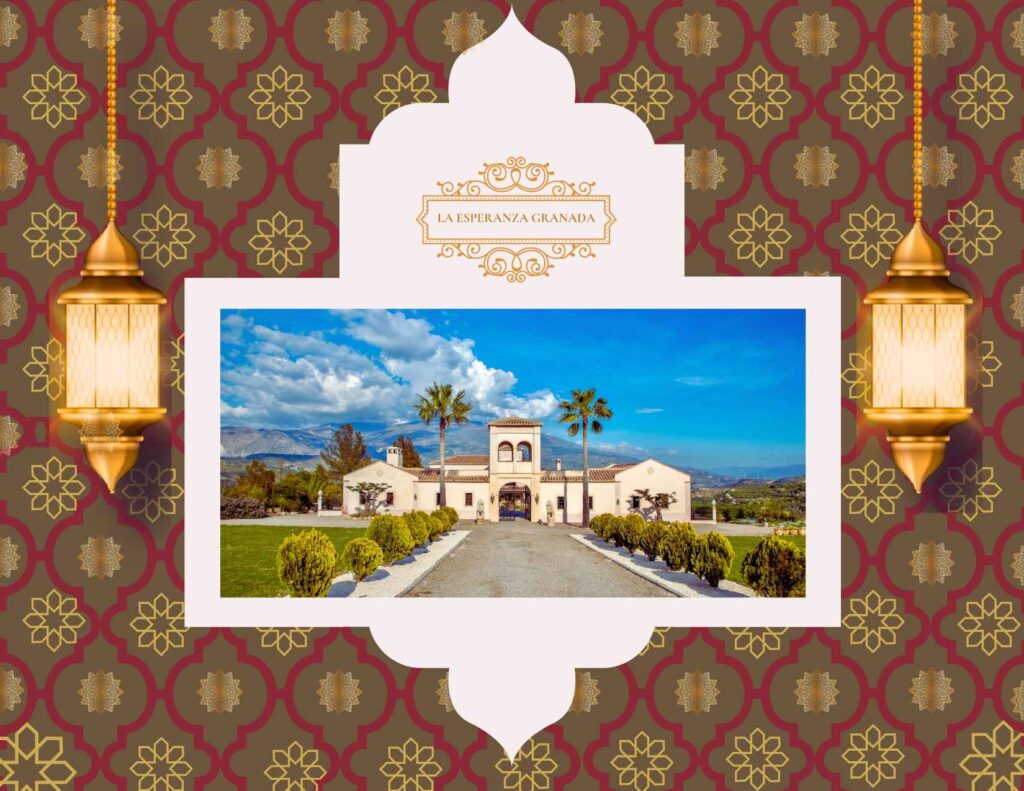
Most visitors exploring Gaudí architecture in Barcelona focus—rightly so—on the famous landmarks: Sagrada Familia, Park Güell, and Palau Güell. Next comes the stylish Eixample district, where Casa Batlló, Casa Milà, and Casa Calvet stand as timeless icons of Catalan Modernism.
After touring six of Gaudí’s masterpieces, many travelers feel they’ve seen it all. They buy souvenirs and prepare to fly home from El Prat Airport. Yet one of Gaudí’s hidden gems remains overlooked—Bellesguard, also known as Casa Figueras.
Tucked quietly into the foothills of Barcelona, this architectural treasure reveals a very different side of the genius—and it’s well worth the detour.
La Esperanza Granada — the most authentic hacienda experience in southern Spain
The Hidden Gaudí Manor of Sarrià-Sant Gervasi
For travelers seeking Gaudí architecture off the tourist trail, a short 20-minute drive from central Barcelona leads to Sarrià-Sant Gervasi, one of the city’s most elegant residential neighborhoods. Here stands Torre Bellesguard, also known as Casa Figueras—an unfinished Gaudí manor built between 1900 and 1909. It sits quietly yet proudly amid leafy streets and historic surroundings.
This spot carries centuries of history. In 1408, it was the site of the home of the last Count of Barcelona, and later, it hosted Pope Benedict XIII. Gaudí’s version, created at the turn of the 20th century, reimagined this heritage with his signature balance of spiritual symbolism and Catalan modernism.
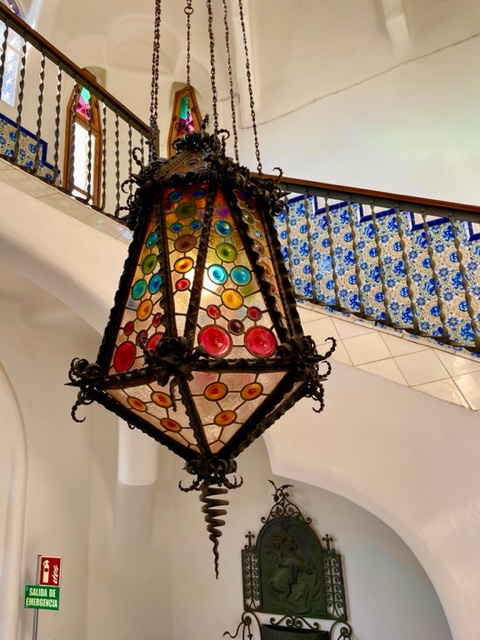

About the Bellesguard of Gaudi
Today, Bellesguard feels distinctly local. Around it, you’ll find schools, small parks, and apartment balconies filled with daily life instead of selfie sticks. From the terrace, you see real Barcelona residents living their routines, not tourists checking in and out of Airbnbs.
At first glance, Bellesguard appears modest—its layout is simple, its details restrained. Yet beneath that quiet exterior lies some of Gaudí’s most complex design work. Followers of Catalan modernist architecture often describe it as one of his most intellectually layered creations, full of subtle geometry and historical symbolism.
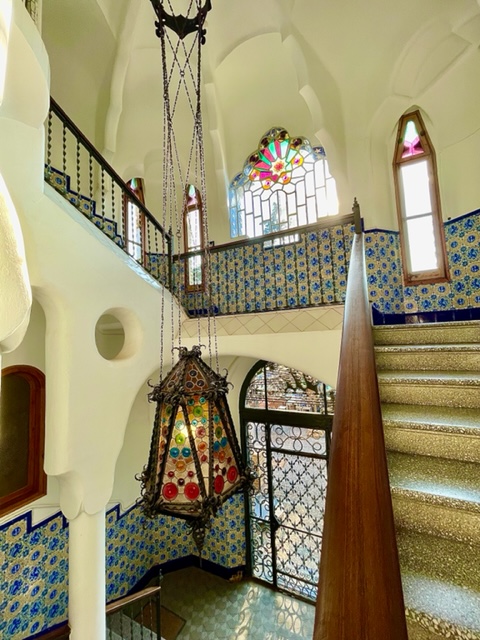
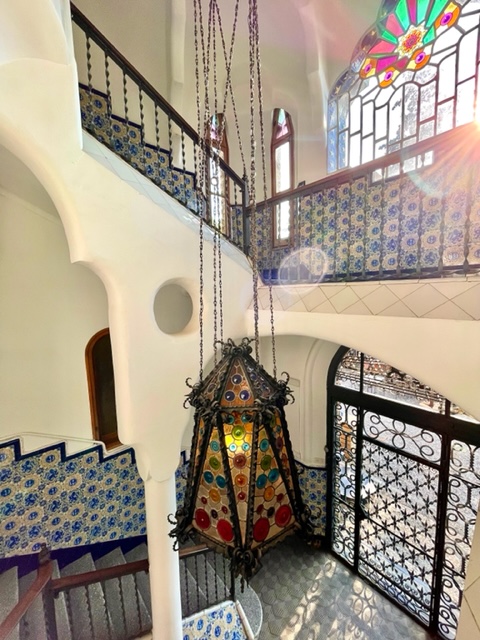
Inside Bellesguard: A Private World Revealed
Until recently, Bellesguard remained a private family residence, hidden in plain sight. The house is modest by millionaire standards, and for a Gaudí design, its foyer feels almost intimate. Yet the moment you step inside, you sense its quiet brilliance.
Exploring Torre Bellesguard feels like unwrapping a forgotten gift. Each staircase tells a different story—some grand and sunlit, others narrow enough to brush both walls as you climb. Every turn reveals another glimpse into the unfinished genius of Gaudí, a balance of precision and imperfection that makes the space come alive.
When I visited, the second floor—once home to the family matriarch—was still under renovation. None of the bedrooms were yet open to visitors, leaving a sense of mystery suspended in the air. I couldn’t help wondering what a Gaudí-designed bedroom might look like—how geometry, light, and craftsmanship would shape a space meant for rest rather than spectacle.
The Climb to the Top: Gaudí’s Hidden Masterpiece

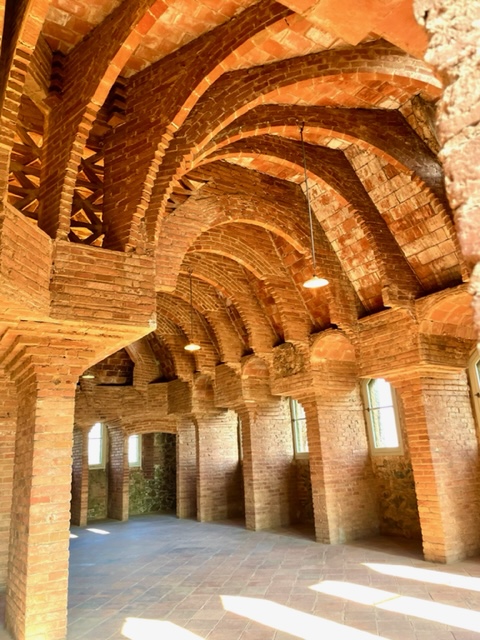
The best of Torre Bellesguard awaits at the very top. To reach it, climb the narrow staircase that winds up through stone and shadow until the light opens around you.
At the summit sits a small smoking room with sweeping views over Barcelona. It’s empty now, its furniture long gone, yet the space still hums with presence. You can almost imagine the conversations that once filled it—the laughter, the cigars, the distant sound of church bells from the city below.
I lingered by the terrace ledge, taking in the panorama and the lingering spirit of a life once beautifully lived. Still, this isn’t the finale.
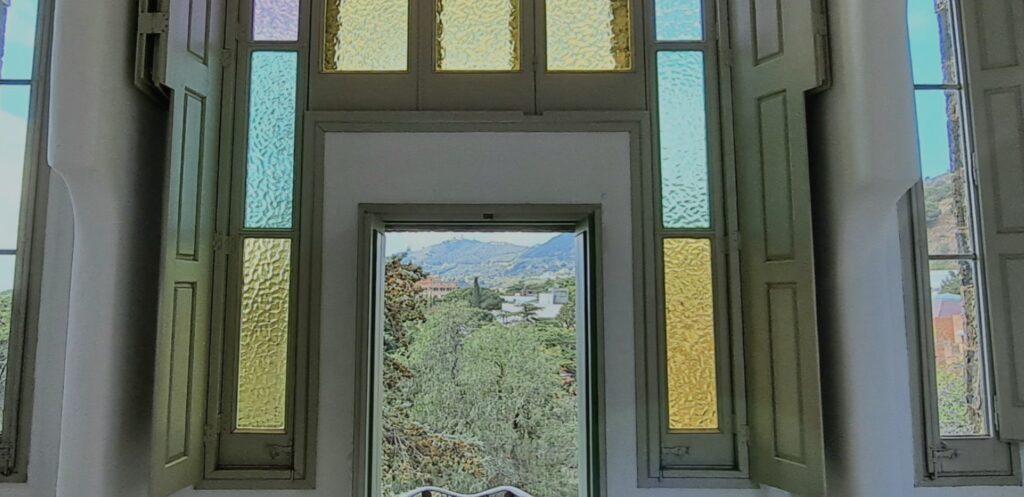
Next to the smoking room lies the music room, tucked beneath the building’s dragon-shaped roof. Here, Gaudí’s unfinished vision is fully visible—raw bricks, open arches, and daring geometry that hint at what might have been. The acoustics are astonishing; even a whisper carries through the vaulted space.
Today, Bellesguard is finally open to visitors, as well as to private weddings and cultural events. Add it to your list of hidden Gaudí treasures in Barcelona—it’s one of the city’s most intimate encounters with the master’s imagination.
READ ABOUT NAGATACHO OHKA : ONE OF THE FINEST DINING EXPERIENCES IN JAPAN
Why Torre Bellesguard Belongs on Every Traveler’s List
Torre Bellesguard may not have the fame of Sagrada Familia or the crowds of Park Güell, but it offers something rarer — intimacy. It’s where Antoni Gaudí’s genius meets history, imagination, and quiet human warmth. Walking through its corridors feels like stepping into the artist’s private sketchbook, where ideas take shape in stone and light.
For travelers who seek authentic experiences beyond Barcelona’s usual icons, Bellesguard is a revelation. It embodies the Catalan spirit — elegant, independent, and deeply rooted in tradition — yet remains refreshingly untouched by mass tourism.
Whether you visit to admire the architecture, to attend a wedding, or simply to watch the sunset from its dragon-shaped roof, Bellesguard rewards you with perspective — both literal and emotional. It reminds you that beauty often hides in plain sight, waiting for those willing to look closer.
At La Esperanza Granada, we celebrate places like this: destinations that still feel personal, meaningful, and alive. So the next time you plan a journey through Andalusia or Catalonia, include Bellesguard on your itinerary — a quiet masterpiece from Spain’s greatest dreamer.


